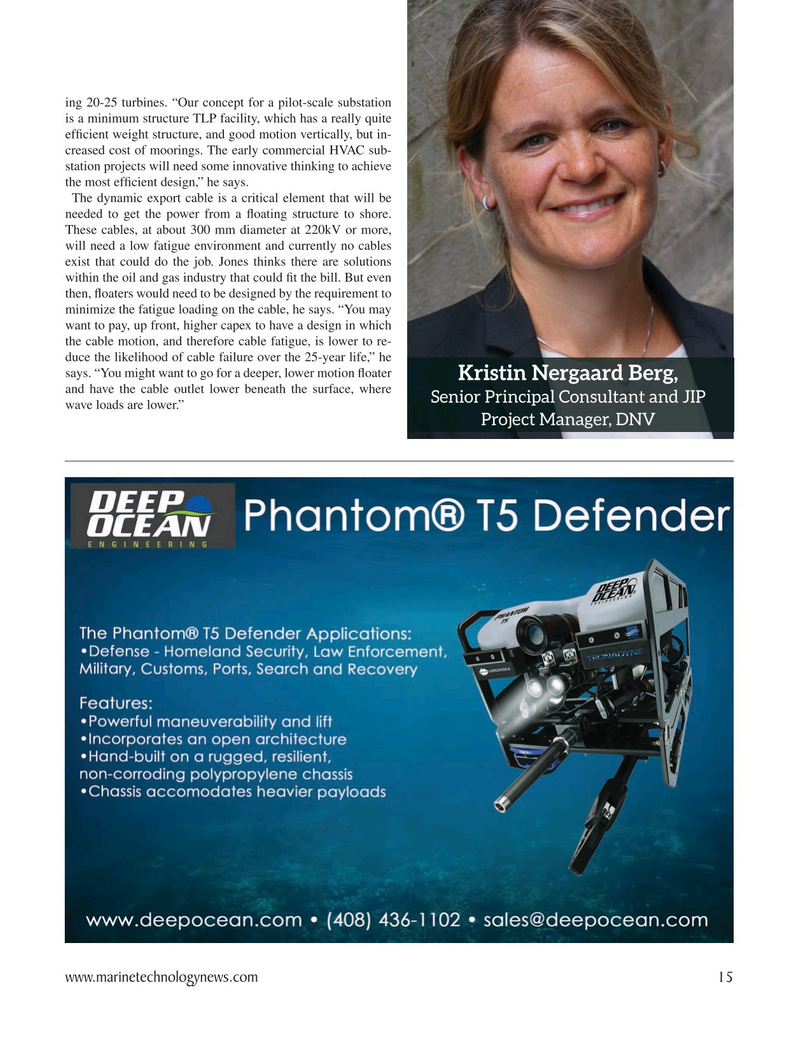
Page 15: of Marine Technology Magazine (January 2022)
Read this page in Pdf, Flash or Html5 edition of January 2022 Marine Technology Magazine
ing 20-25 turbines. “Our concept for a pilot-scale substation is a minimum structure TLP facility, which has a really quite ef? cient weight structure, and good motion vertically, but in- creased cost of moorings. The early commercial HVAC sub- station projects will need some innovative thinking to achieve the most ef? cient design,” he says.
The dynamic export cable is a critical element that will be needed to get the power from a ? oating structure to shore.
These cables, at about 300 mm diameter at 220kV or more, will need a low fatigue environment and currently no cables exist that could do the job. Jones thinks there are solutions within the oil and gas industry that could ? t the bill. But even then, ? oaters would need to be designed by the requirement to minimize the fatigue loading on the cable, he says. “You may want to pay, up front, higher capex to have a design in which the cable motion, and therefore cable fatigue, is lower to re- duce the likelihood of cable failure over the 25-year life,” he says. “You might want to go for a deeper, lower motion ? oater
Kristin Nergaard Berg, and have the cable outlet lower beneath the surface, where
Senior Principal Consultant and JIP wave loads are lower.”
Project Manager, DNV www.marinetechnologynews.com 15
MTR #1 (1-17).indd 15 1/25/2022 10:19:53 AM

 14
14

 16
16
